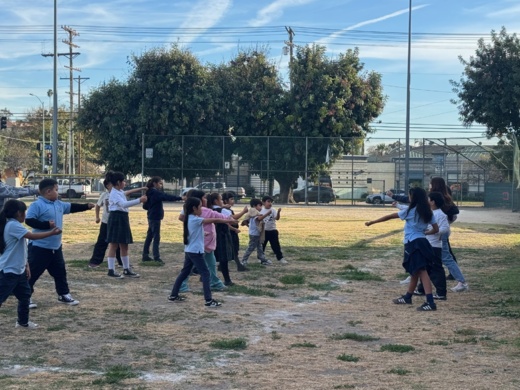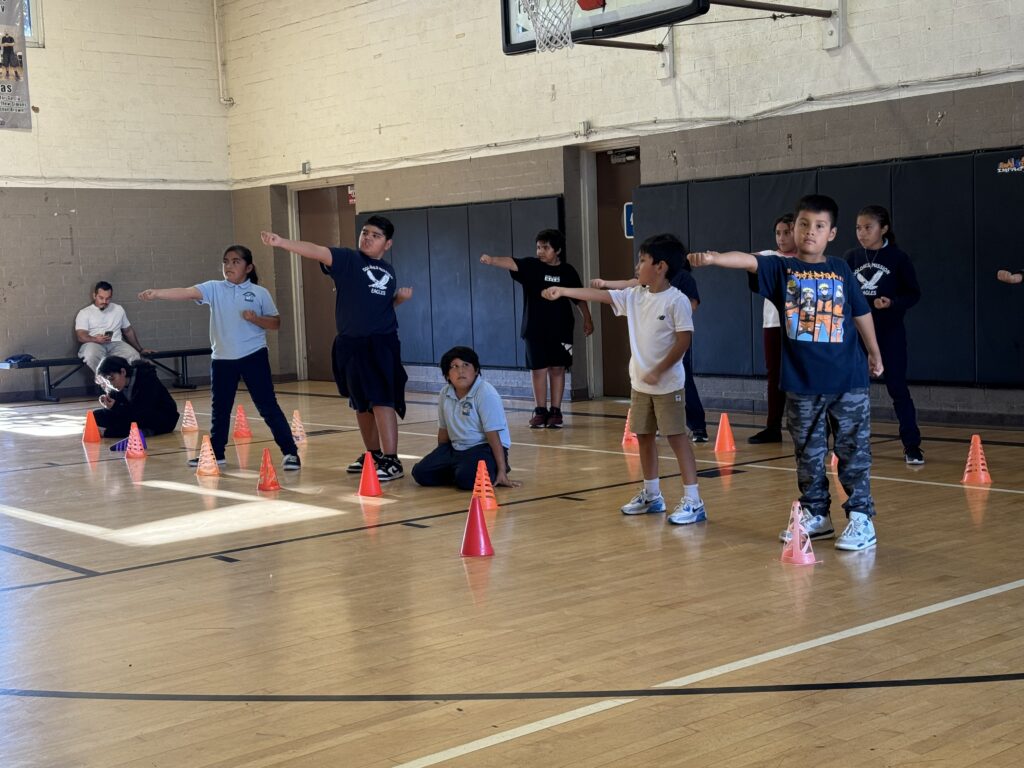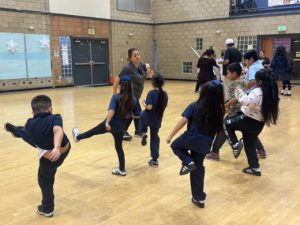 Every summer, parents find themselves asking the same question everywhere: how do I keep my children engaged, active, and learning when school is out?
Every summer, parents find themselves asking the same question everywhere: how do I keep my children engaged, active, and learning when school is out?
While summer can be a time of rest and relaxation for some, for many children, especially those in under-resourced communities, it can also mean academic regression and behavioral disruption. Unfortunately, this learning loss disproportionately affects students who are without access to enriching, structured activities (Cooper et al., 1996).
Many parents often seek out summer school options, summer camps, and even tutoring to avoid the “summer slide” … but what if the solution isn’t the standard options we’ve always known?
Emerging research points to a surprisingly effective intervention: structured movement. When structured movement is combined with social-emotional learning (SEL), it does more than get kids moving. It helps them regulate emotions, improve focus, and build the kind of resilience that translates directly into academic readiness and other areas in life.
What are the Benefits of SEL/Structured Movement?
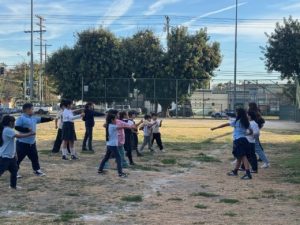 The “summer slide” is comprised of more than just academic loss. Without the structured activity that children receive during a traditional school year, their physical fitness can decline, routines can unravel, and sometimes, behavioral challenges can increase as a result – especially for children with limited access to safe outlets or enrichment opportunities (Von Hippel & Hamrock, 2019).
The “summer slide” is comprised of more than just academic loss. Without the structured activity that children receive during a traditional school year, their physical fitness can decline, routines can unravel, and sometimes, behavioral challenges can increase as a result – especially for children with limited access to safe outlets or enrichment opportunities (Von Hippel & Hamrock, 2019).
Finding a program that not only builds the body but also the mind is particularly important for children from underserved communities, who often face compounded risk factors including trauma and fewer extracurricular options. These youth benefit most when summer programs are not just safe, but also restorative and skill-building.
Unlike free play or casual sports programs, structured movement like martial arts follows a predictable sequence. Routines and repetition offer children a sense of safety and control that ultimately results in less anxiety. For children who struggle with attention or emotional regulation, these predictable patterns and routines help create neurological pathways that support impulse control and focused thinking (Best, 2010).
In a 2018 study, researchers found that just 20 minutes of moderate physical activity per day led to immediate improvements in attention and reading comprehension among children with and without attention disorders (Pontifex et al., 2013). Over time, consistent physical routines teach discipline while also developing more effective emotional coping skills and resilience. These are skills they can bring back into the classroom and beyond.
However, the real game-changer is the combination of SEL and structured movement. Research has shown that SEL is a positive addition to curriculum in any setting for any student, not just those from underserved communities (Von Hippel & Hamrock, 2019). SEL refers to the process through which individuals learn to understand and manage emotions, set goals, show empathy, maintain positive relationships, and make responsible decisions (Collaborative for Academic, Social, and Emotional Learning [CASEL], 2020).
These are not just “soft skills” or something to be dismissed as a core competency learned at home. According to Durlak et al. (2011), children who participate in evidence-based SEL programs show significantly improved classroom behavior, better attitudes about themselves and others, and an 11-percentile-point gain in academic performance.
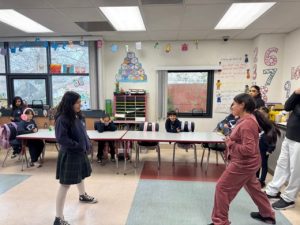 In addition, SEL builds a progressive pathway in which many young people can excel beyond the classroom, providing a breakthrough to many unfortunate circumstances that often plague underserved youth. From financial barriers that can create educational inequality to a pervasive lack of mentorship opportunities and environmental stressors, underserved youth are often the victims of their uncontrolled circumstances (Advancing the Seed, 2025).
In addition, SEL builds a progressive pathway in which many young people can excel beyond the classroom, providing a breakthrough to many unfortunate circumstances that often plague underserved youth. From financial barriers that can create educational inequality to a pervasive lack of mentorship opportunities and environmental stressors, underserved youth are often the victims of their uncontrolled circumstances (Advancing the Seed, 2025).
By introducing structured movement programs into community centers and summer programs that build both SEL and executive function, the resulting benefits can counteract this decline on multiple levels:
- Cognitive: Improved focus, memory, and task management
- Emotional: Better stress and impulse control
- Social: Increased empathy and conflict-resolution skills
- Academic: Greater readiness to learn and persist through challenges
Combining SEL principles with structured movement not only ushers in a scientifically proven method to elevate youth in multiple ways but also increases the benefits. Programs like ours that integrate goal setting, emotional awareness, and cooperative learning into physical activity have shown positive effects on both behavior and cognition (Iachini et al., 2016).
Boys and Girls Clubs and YMCAs, for example, are uniquely positioned to support SEL with structured movement. They offer informal, flexible learning environments where staff can intentionally model positive behaviors and support youth in practicing self-awareness, self-regulation, and social skills – while still offering parents a relatively affordable activity for summer and beyond. When SEL is embedded into curriculum, especially through physical activities, it becomes a powerful tool for transformation.
Inclusive and Adaptable for Every Child
Now more than ever, inclusive and adaptable programs are not just beneficial, they’re essential. While social-emotional learning (SEL) and structured movement are each transformational on their own, together they create a dynamic framework that meets the needs of the whole child. This combination enhances emotional intelligence while simultaneously improving physical coordination and confidence, making it especially effective in diverse, mixed-ability settings.
What makes this duo so inclusive is its inherent flexibility. SEL principles are rooted in understanding individual needs and creating emotionally safe environments. Structured movement, meanwhile, introduces predictable routines and physical engagement that can be modified for any skill level. Together, they offer a system that is both emotionally supportive and physically accessible, an ideal foundation for inclusive learning.
Whether a child is neurotypical or neurodivergent, shy or outgoing, physically advanced or just beginning, structured SEL-infused programs provide a low-barrier, high-benefit experience. Instructors can adjust the pace, complexity, and environment to suit a wide range of learners, helping everyone feel successful and engaged.
What’s even better? Research supports this approach. Children with autism spectrum disorder who participate in integrated, structured physical activities show notable improvements in social interaction and communication skills (Bremer et al., 2016). For youth with ADHD or behavioral disorders, structured routines grounded in SEL can provide a safe, non-judgmental space to develop coping strategies and experience success.
When designed with purpose and progression, activity becomes more than just simple exercise: it becomes a ground-breaking tool for learning. Diamond and Ling (2016) found that coordinated physical activities with SEL, such as our martial arts program, are particularly effective at strengthening executive functions like working memory, cognitive flexibility, and inhibitory control – all of which are foundational to both academic performance and behavioral growth.
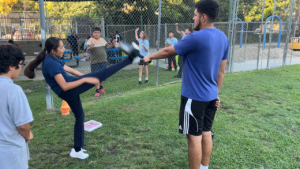 Community centers and school-based programs play a vital role in delivering these integrated experiences, particularly for underserved students. These environments offer safe, supportive spaces where group activities encourage empathy, teamwork, and resilience. This is especially important in the wake of the COVID-19 pandemic, as many students continue to experience anxiety, emotional dysregulation, and difficulty reconnecting with peers (Loades et al., 2020).
Community centers and school-based programs play a vital role in delivering these integrated experiences, particularly for underserved students. These environments offer safe, supportive spaces where group activities encourage empathy, teamwork, and resilience. This is especially important in the wake of the COVID-19 pandemic, as many students continue to experience anxiety, emotional dysregulation, and difficulty reconnecting with peers (Loades et al., 2020).
Yet many of these programs face financial barriers that limit their ability to offer robust, structured programming. It’s critical to identify low-cost, high-impact solutions like ours that meet both the emotional and physical needs of children and equip our local community centers and schools to offer them: solutions that are scalable, evidence-based, and responsive to the communities they serve.
What This Means for Community Leaders
For community centers, Boys and Girls Clubs, summer camp leaders, and schools, this research presents a clear opportunity.
Investing in SEL-aligned, movement-based programming doesn’t just entertain kids during the summer – it prepares them for the future both inside and outside the classroom. These programs deliver measurable results in behavior, mental health, and academic readiness, especially when offered consistently throughout the summer, and can promote measured positive outcomes when participants go back to school.
We know that to truly meet the diverse needs of students (across age, ability, background, and learning style), programs must be designed with adaptability at their core. The ideal framework blends practical implementation with meaningful developmental outcomes, making it easy for any setting to adopt without sacrificing quality or adding expensive resources. Key components include:
- No Need for Licensed Instructors: One of the most important aspects of accessibility is removing barriers to implementation. With the right tools such as step-by-step video modeling, visual aids, and clear instructions, facilitators do not need formal teaching or fitness credentials. This opens the door for educators, paraprofessionals, camp leaders, and even caregivers to confidently lead martial arts sessions, empowering more organizations to provide high-quality programming without added staffing costs.
- Flexible Formats: Inclusive programs must accommodate different group sizes, time constraints, and physical environments. The most effective frameworks are those that can be delivered in large group settings, small cohorts, or even one-on-one. Whether in a school or a community center, the curriculum should adapt to the space and the participants without compromising the outcome.
- Built-In Skill Progression: To promote engagement and self-efficacy, programs should include a clear path for growth. By allowing students to set goals, track their progress, and earn recognition through visible milestones (such as belts, badges, or certificates), learners feel a sense of ownership and pride. This tiered structure also makes it easier to scaffold support and celebrate both small wins and long-term development.
- Embedded SEL Language: The integration of social-emotional learning should not be an afterthought—it should be woven into every activity. Facilitators should be equipped with prompts and cues that encourage emotional awareness, empathy, growth mindset, and self-regulation. For example, movement routines can be paired with affirmations or reflection questions that help students process any frustration and recognize their effort.
Together, these components ensure that SEL and structured movement programs are not only effective but also sustainable and inclusive for a wide range of learners and environments.
Movement is a Catalyst for Change
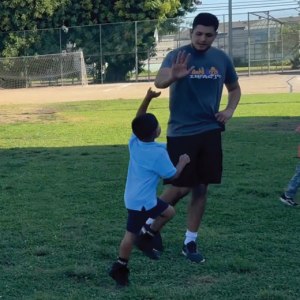 The research is clear: structured movement, when grounded in SEL principles, offers a multi-dimensional solution to summer learning loss and youth disengagement. It’s not just a way to “stay busy” during the summer – it’s a way to build up the whole child.
The research is clear: structured movement, when grounded in SEL principles, offers a multi-dimensional solution to summer learning loss and youth disengagement. It’s not just a way to “stay busy” during the summer – it’s a way to build up the whole child.
By prioritizing programs that develop focus, resilience, and readiness to learn, community centers can become not just places of recreation, but hubs of transformation. This summer let’s help our youth grow stronger—inside and out.
Looking for a proven way to beat the summer slump? You’ve just found it.
At Believing Through Achieving, we combine the power of structured movement and SEL into one easy-to-use martial arts platform—designed for real-world settings and real-life learners. Our program is adaptable, inclusive, and requires no prior experience to implement. Best of all?
Click Here – It’s completely free up to yellow belt.
Whether you’re running a summer camp or leading a community center where kids need structure and support, we’re here to help you deliver growth and confidence—without any added stress or cost.
This isn’t just another summer activity. It’s a purpose-driven solution. Let’s build something powerful—together.
References
Advancing the Seed. (2025). Pathways to Success: Supporting Underserved Youth in Achieving Their Goals. Retrieved from https://www.advancetheseed.org/blog/pathways-to-success-supporting-underserved-youth-in-achieving-their-goals
Best, J. R. (2010). Effects of physical activity on children’s executive function: Contributions of experimental research on aerobic exercise. Developmental Review, 30(4), 331–351. https://doi.org/10.1016/j.dr.2010.08.001
Bremer, E., Crozier, M., & Lloyd, M. (2016). A systematic review of the behavioral outcomes following exercise interventions for children and youth with autism spectrum disorder. Autism, 20(8), 899–915. https://doi.org/10.1177/1362361315616002
Collaborative for Academic, Social, and Emotional Learning (CASEL). (2020). What is SEL? https://casel.org/what-is-sel/
Cooper, H., Nye, B., Charlton, K., Lindsay, J., & Greathouse, S. (1996). The effects of summer vacation on achievement test scores: A narrative and meta-analytic review. Review of Educational Research, 66(3), 227–268. https://doi.org/10.3102/00346543066003227
Diamond, A., & Ling, D. S. (2016). Conclusions about interventions, programs, and approaches for improving executive functions that appear justified and those that, despite much hype, do not. Developmental Cognitive Neuroscience, 18, 34–48. https://doi.org/10.1016/j.dcn.2015.11.005
Durlak, J. A., Weissberg, R. P., Dymnicki, A. B., Taylor, R. D., & Schellinger, K. B. (2011). The impact of enhancing students’ social and emotional learning: A meta‐analysis of school‐based universal interventions. Child Development, 82(1), 405–432. https://doi.org/10.1111/j.1467-8624.2010.01564.x
Iachini, A., Pitner, R., Morgan, F., & Rhodes, K. (2016). Promoting SEL in afterschool and summer programs through evidence-based practices. Afterschool Matters, 23, 1–10.
Loades, M. E., Chatburn, E., Higson-Sweeney, N., Reynolds, S., Shafran, R., Brigden, A., … & Crawley, E. (2020). Rapid systematic review: The impact of social isolation and loneliness on the mental health of children and adolescents in the context of COVID-19. Journal of the American Academy of Child & Adolescent Psychiatry, 59(11), 1218–1239. https://doi.org/10.1016/j.jaac.2020.05.009
Pontifex, M. B., Saliba, B. J., Raine, L. B., Picchietti, D. L., & Hillman, C. H. (2013). Exercise improves behavioral, neurocognitive, and scholastic performance in children with attention-deficit/hyperactivity disorder. The Journal of Pediatrics, 162(3), 543–551. https://doi.org/10.1016/j.jpeds.2012.08.036
Von Hippel, P. T., & Hamrock, C. (2019). Do test score gaps grow before, during, or between the school years? Measurement artifacts and what we can know in spite of them. Sociological Science, 6, 43–80. https://doi.org/10.15195/v6.a3
